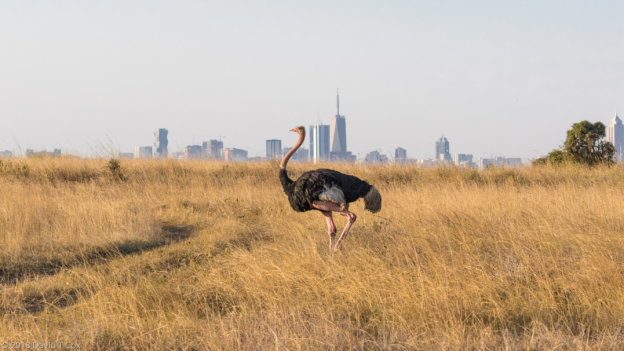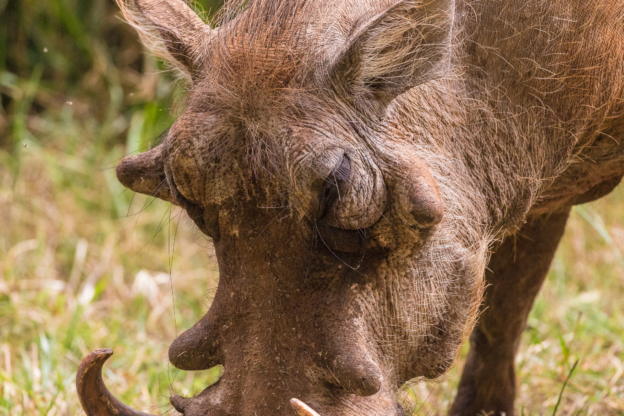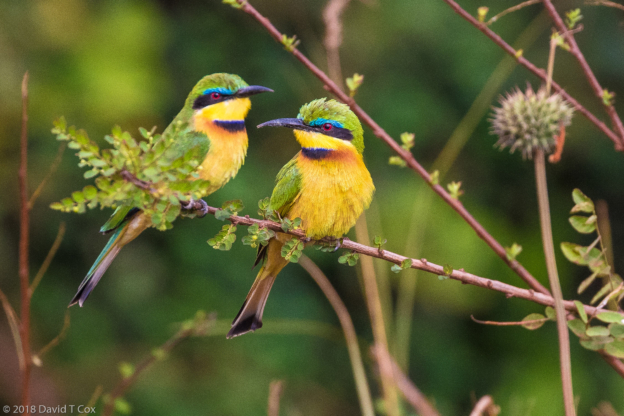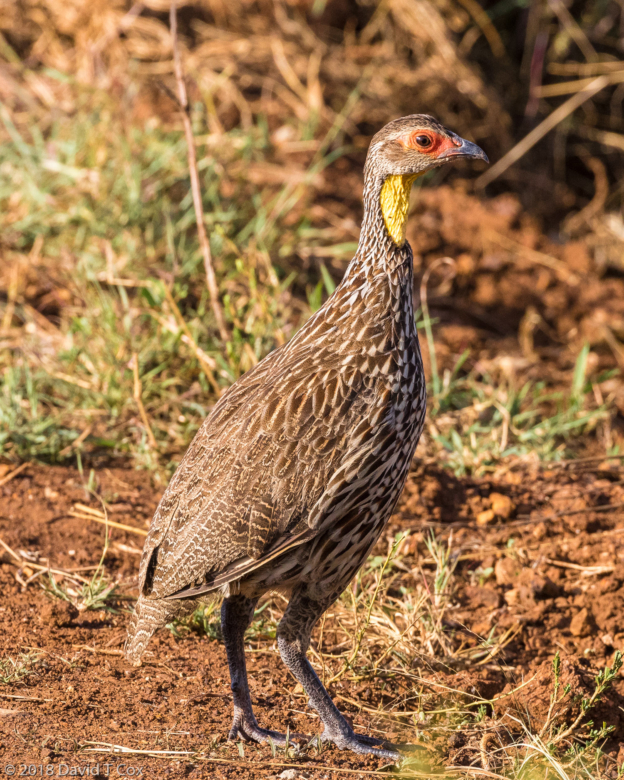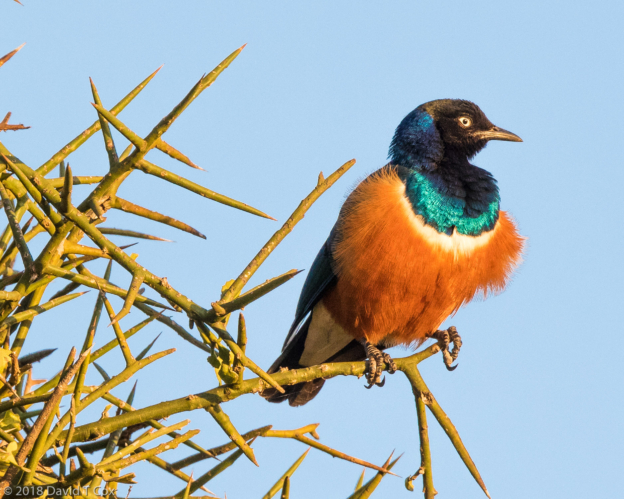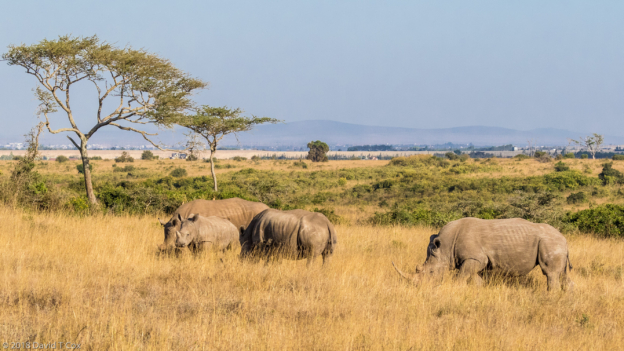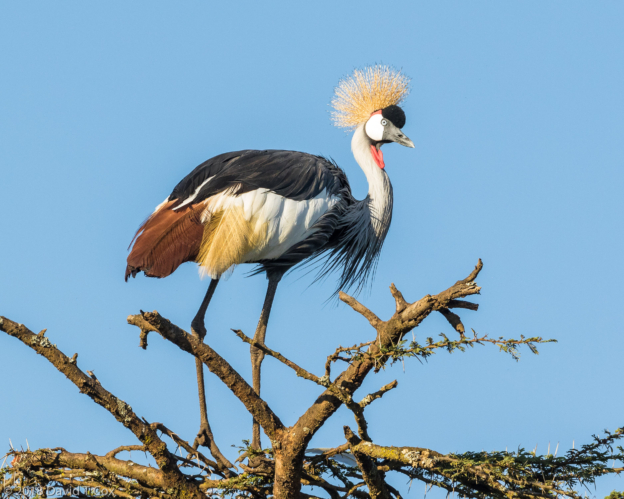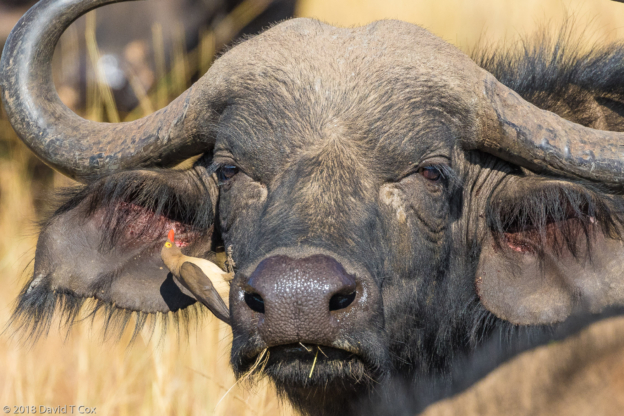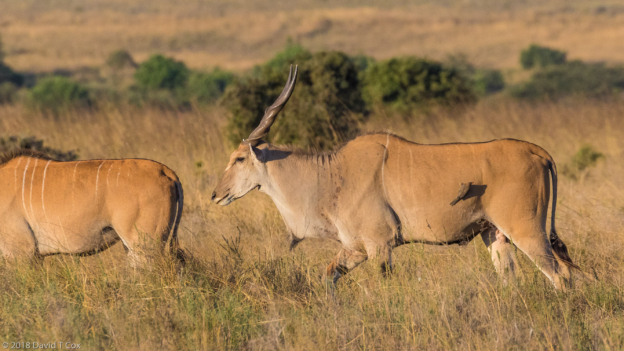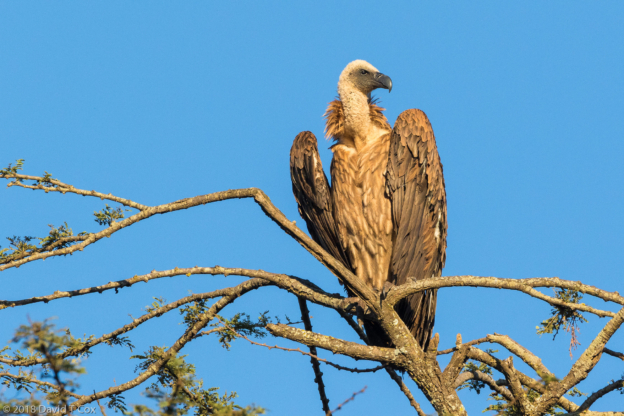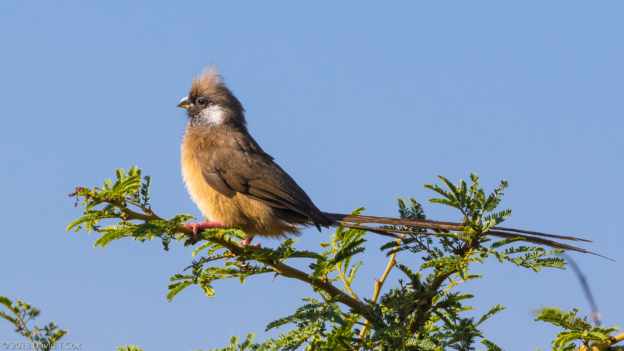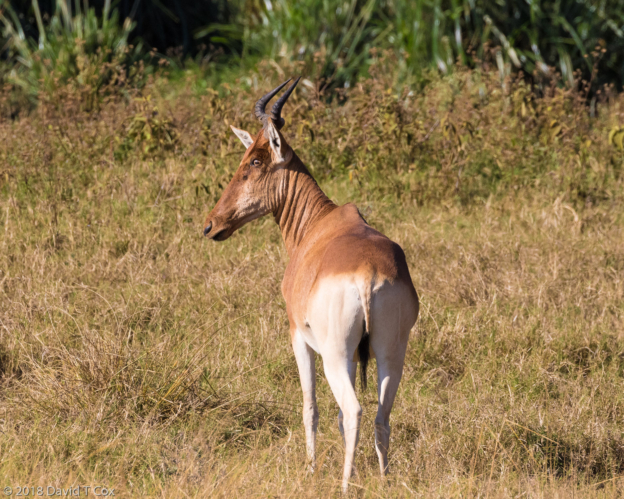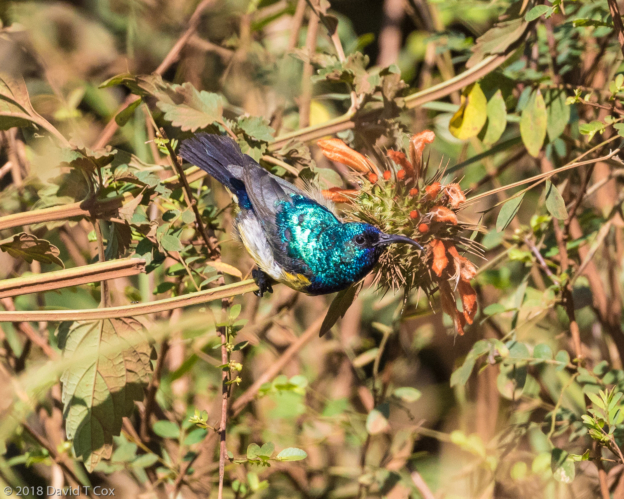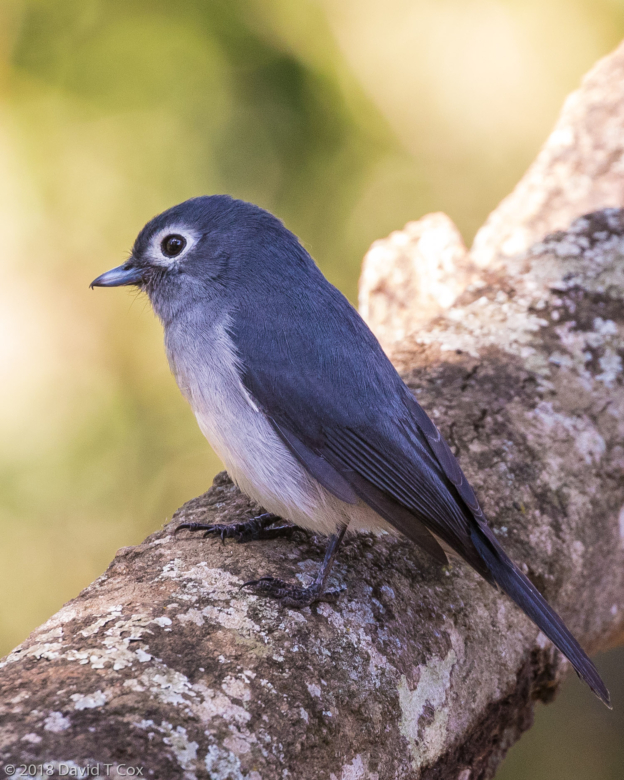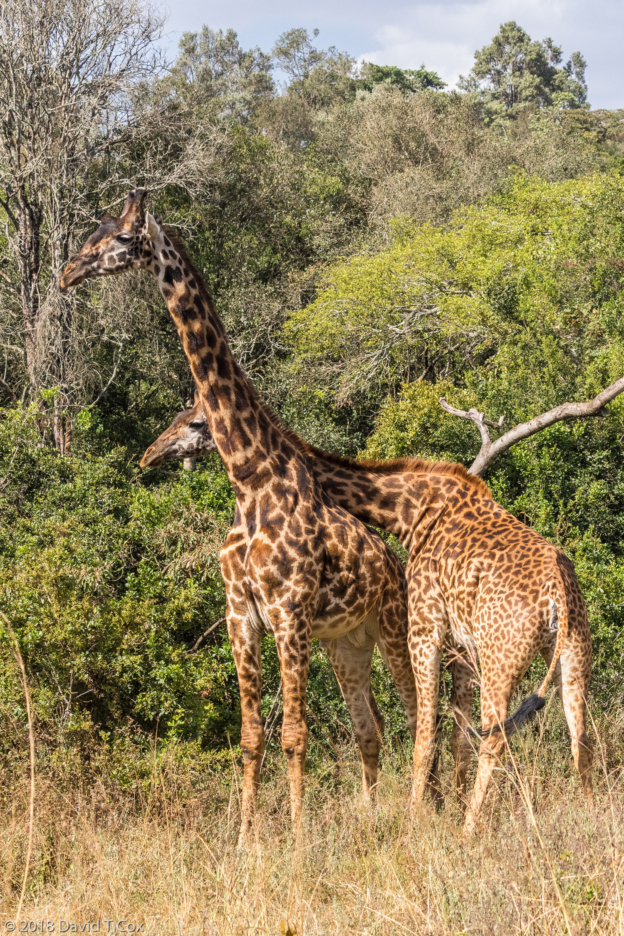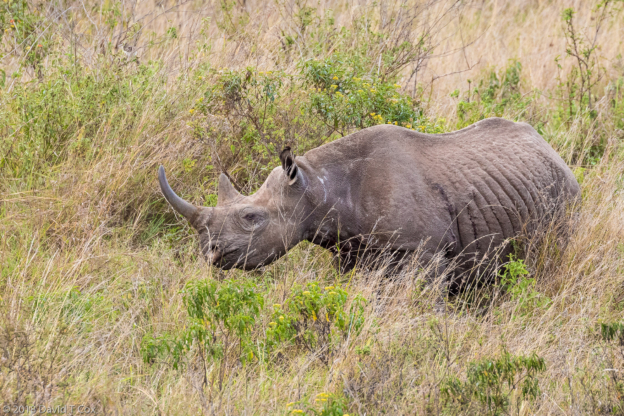All Photos Are Below the Travelogue Text
Click on Any Photo To Open Slide Show
To print the travelogue, right click anywhere on the page. Choose "Print" from your browser dialog box. You can choose Save to PDF in the browser print window.
Share your thoughts.
Email Dave - coxdavid55@hotmail.com
I am at the beginning of a 3 month visit to Madagascar and Kenya for wildlife and bird photography. After leaving my house in Tucson I endured four flight legs and one long taxi ride, covering 30+ hours, to get to my hotel in downtown Nairobi (my return trip is scheduled to be 4 hours longer). From Nairobi it is several hours more of flight time to Antananarivo, capital of Madagascar. Because I could not book flights directly all the way to Madagascar, I spent 5 days in Nairobi before flying on (I will return to Kenya after 6 weeks of travel in Madagascar).
Nairobi is a sprawling city of over 5 million, and includes a huge shantytown only a little smaller than Soweto in Johannesburg. Threats of street crime and terror attacks have been somewhat reduced with new security measures in the last 4 years. Entering the international airport from the city has one navigate 3 different security checks. First, almost a mile from the airport all vehicles are stopped and searched, and all passengers must exit the vehicles and form a huge line which passes through a building with dual metal detectors. At the terminal, vehicles must park some distance from the entrance, where a second full security detail now has all luggage pass through huge belted scanners, and all passengers, after showing identification, pass through full body-scan machines. At this point one checks in and acquires boarding passes. Then one goes through the final security checkpoint where, again, after removing all metal, computers, etc. bags again are scanned and one walks through the third set of body scanners. My hotel in downtown Nairobi had guards fully inspect all vehicles before they could pull up to the hotel entrance. At the entrance one passed through a scanner and luggage went through an x-ray machine. Upon exiting the elevators, one needed the electronic room card to open steel doors to exit the elevator lobby and approach one’s room, which of course also required the key. On major roads, overhead cameras constantly monitor traffic and photos are snapped of all occupants of the vehicles (they operate like speed cameras, but photograph everyone). I suspect the people who operate all this security probably stop paying much attention, but the effort certainly is impressive and a little oppressive, and I am told attacks and crime has been much reduced.
My downtown hotel, the Ibis, had a lovely rooftop bar where I enjoyed my late afternoons with the most popular local beer, the Tusker, in imperial pint bottles. Marabou Storks flew in small groups overhead returning to their roosting grounds, as Black Kites circled together with Pied Crows.
As I had 5 initial days in Kenya I opted to spend just 2 nights downtown then was transported into the Nairobi National Park, the only large game park in the world located literally bordering a large city. The Park contains all the dangerous Big Five animals except elephants, as well as many antelope species, giraffe, hippos, zebra and hyena among countless others. An electric fence is all that separates many miles of the northern park boundary, and its lions, buffalo and rhinos, from busy Nairobi streets and apartment buildings. The southern boundaries of the park are open and permit the animals to migrate out and into other parks. I stayed at the only tented safari camp permitted in the park, the Nairobi Tented Camp, a semi-luxury camp with solar power, large private tented accommodation with private baths, good food and excellent service. Although the park is separated from the city, the camp deep within the park is open and unprotected. After sunset one must be accompanied by staff to walk to and from the tents, group dining and gathering areas. Wild animals routinely walk through the camp, including bushbuck, suni, warthogs and buffalo, although I was told lions and rhinos are relatively rare. Nights under the trees were pitch black, and the cries of the many animals “interesting” – especially the Tree Hyrex, which were located around the camp, one directly over my tent. Their nightly communication involved an extraordinarily loud series of creaks, as of two huge tree trunks grinding against each other in a storm, followed by loud wails that invoked images of a large grazing beast’s (or person’s) last cries while being slaughtered by a lion. The spotted hyena’s ascending whoops also were a little chilling.
I spent early mornings and late afternoons on game drives throughout the Park. We encountered many zebra, giraffe, buffalo, impala, hartebeest, eland, ostrich, hippo and lion. This is one of the few Parks in all of Africa with large numbers of both species of endangered rhinos, the Black and the White. We watched a number of small social groups of white rhino. The Blacks are fewer in number, solitary, and stay within the shrubbery which they consume, and so are quite rare to see. I lucked out my last hour of the last day in locating a large male, which slowly moved to cross the dirt trail right in front of us. Below I have posted photos of many of the animals, as well as some of the wondrous birds, including two species of the tiny iridescent sunbirds, the Scarlet Chested and Variable, and the Grey-crowned Crane, Superb Starling, Little Bee-eater and Speckled Mousebird, among others.
On Tuesday I was transported to the airport, passing eventually through the onerous security previously described, and flew onward to Madagascar to spend the next 41 days, mostly with a private vehicle and driver traveling throughout the island’s various habitat zones to visit around a dozen National Parks and private reserves. I look forward to viewing the unique and mostly endemic wildlife and birds. I currently am spending a few days in the capital city, wandering the over-crowded, traffic-jammed narrow streets which wind throughout the hilly region. My hotel, the Sakamanga, has nice rooms filled with unique local artwork, and one of the best French restaurants, along with an outdoor bar area around the pool. Wandering throughout the pool area is the semi-pet resident bald parrot, slightly crazy, and constantly accosting guests. My first day, he would not leave me alone, climbing up my legs and chair to get on the table and opening my backpack. It knew precisely how to open various plastic snaps and straps. Then it would sit in a corner brooding and make the most wondrous whistling noises and songs.
Later. Dave
- Warthog, Nairobi NP, Kenya
- Little Bee-eater, Nairobi NP, Kenya
- Yellow-necked Spurfowl, Nairobi NP, Kenya
- Superb Starling, Nairobi NP, Kenya
- White Rhino, Nairobi NP, Kenya
- Grey Crowned Crane, Nairobi NP, Kenya
- Red-billed Oxpecker on Cape Buffalo, Nairobi NP, Kenya
- Violet-backed Starling juv, Nairobi NP, Kenya
- Ostrich, Nairobi NP, Kenya
- Eland w Red-billed Oxpecker, Nairobi NP, Kenya
- White-backed Vulture, Nairobi NP, Kenya
- Scarlet-chested Sunbird, Nairobi NP, Kenya
- Speckled Mousebird, Nairobi NP, Kenya
- Hartebeest cookii, Nairobi NP, Kenya
- Variable Sunbird, Nairobi NP, Kenya
- White-eyed Slaty Fycatcher, Nairobi NP, Kenya
- Giraffe, Nairobi NP, Kenya
- Bush Hyrex, Nairobi NP, Kenya
- Black Rhino, Nairobi NP, Kenya
To print the travelogue, right click anywhere on the page. Choose "Print" from your browser dialog box. You can choose Save to PDF in the browser print window.
Share your thoughts.
Email Dave - coxdavid55@hotmail.com
